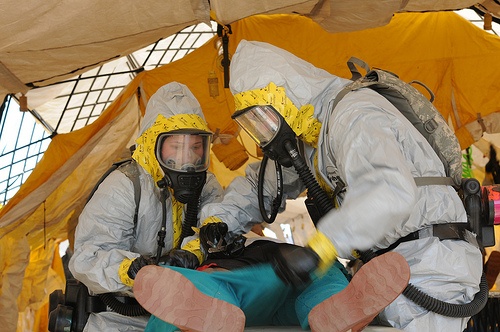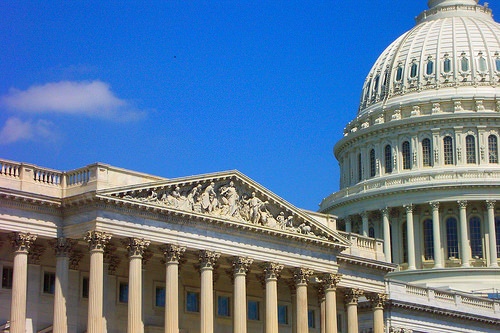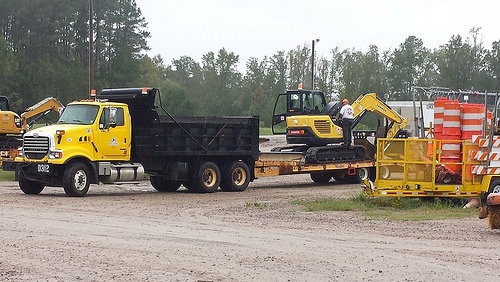In Re Hornby Residences Ltd. (2017 BCSECCOM 17), the British Columbia Securities Commission had to determine whether a real estate development corporation and its principal had violated the BC Securities Act s. 57(b) prohibition against fraud in connection with the issuance of a security when the funds invested were used to pay the principal and other corporations controlled by the same principal, Brendan James Schouw. Schouw was a real estate developer and the sole director of Hornby, and of Grace Residences Ltd. and Homer Residences Ltd. Schouw was also connected with Drake Residences Ltd., although the Commission was not provided with information about its directors and officers.
Read MoreAudit, Compliance and Risk Blog
BC Securities Commission Addresses Allegations of Fraud Against Real Estate Developer
Posted by Ron Davis on Thu, May 04, 2017
Tags: Corporate Governance, Business & Legal, SEC, Canadian, directors & officers
All over the world, our brightest and most creative minds are finding ways for us to produce fewer greenhouse gases and use renewable energy to its greatest potential with fascinating new technologies.
Sustainable Job Innovators
Read MoreTags: climate change, clean water
Reopening Review of Automobile GHG Emission Standards For 2022-2025
Posted by Jon Elliott on Tue, Apr 25, 2017
The biggest difference between Presidents Obama’s and Trump’s environmental policies relate to regulation of greenhouse gases (GHGs) that most scientists and policy-makers believe contribute to climate change – a proposition which President Trump and his appointees do not embrace. On March 15, the Environmental Protection Agency (EPA) announced its reconsideration of GHG emission standards from “light duty” vehicles such as automobiles and small trucks, for model years 2022-2025. These standards were set in 2012 by EPA, in cooperation with the (US federal) National Highway Traffic Safety Administration (NHTSA) and the California Air Resources Board (ARB). Three days before President Obama left office, on January 17, EPA reaffirmed the 2022-2025 standards, determining them to be technically and economically feasible for auto makers to meet and cost-effective for customers.
Tags: California Legislation, Environmental risks, Environmental, EPA, ghg
On March 16, President Trump released his initial budget proposal for the 2018 federal Fiscal Year. Among its many provisions is a proposal to zero out budgeting for the Chemical Safety and Hazard Investigation Board (more often referred to as the Chemical Safety Board or CSB).
Read MoreTags: Environmental risks, Environmental, EPA, Hazcom
President Trump Orders Review of “Waters of the United States”
Posted by Jon Elliott on Tue, Apr 11, 2017
On February 28, President Trump issued Executive Order (EO) Number 13778, ordering the Environmental Protection Agency (EPA) and the Army Corps of Engineers (Corps) to review their current regulatory definitions of “waters of the United States” – sometimes called “navigable waters.” (I blogged about this definition here). The EO strongly points toward a narrower definition that would reduce the agencies’ jurisdiction, reversing rules issued in 2015 during President Obama’s administration.
Read MoreTags: Environmental risks, Environmental, EPA, Hazcom, effluent, clean water
Trump Executive Order Rolls Back Obama’s Climate Initiatives
Posted by Jon Elliott on Tue, Apr 04, 2017
Candidate Trump promised to reverse President Obama’s climate initiatives, which he variously described as based on uncertain science and/or as a “war on coal.” Since taking office, President Trump has moved expeditiously to make good on those promises. On March 28 he issued an executive order (EO) “Promoting Energy Independence and Economic Growth,” packaging a large set of repeals and re-directions to move US federal policies firmly away from climate change and toward domestic fossil fuels.
Read MoreTags: Environmental risks, Environmental, EPA, climate change
Efforts to prevent and respond to chemical disasters are undergoing their first thorough review since many were created decades ago after December 1984’s catastrophe in Bhopal, India. President Obama triggered these reviews in August 2013, when he issued an Executive Order directing federal regulatory agencies to review specified regulatory programs that are designed to prevent such disasters: Occupational Safety and Health Administration’s (OSHA) Chemical Process Safety Management Standard (PSM); Environmental Protection Agency’s (EPA) Accidental Release Prevention (ARP) program and Emergency Planning and Right-to-Know Act (EPCRA) program; and Department of Homeland Security’s (DHS) Chemical Facility Anti-Terrorism Standards (CFATS) program (I blogged about the EO here). EPA proposed ARP revisions in March 2016 (I blogged about them here), and adopted final revisions on January 13, 2017.
Read MoreTags: Environmental risks, Environmental, EPA, Hazcom
Supreme Court Nominee’s Record Provides Insight into Views on Internet and Social Media Law
Posted by Michael Lambert on Thu, Mar 23, 2017
Legislatures and lower courts have traditionally been responsible for developing Internet law in the United States, but recently the U.S. Supreme Court has been asserting a more active role in shaping Internet law jurisprudence. In 2015, the Court considered whether a Facebook post constituted a “true threat” in Elonis v United States, and this summer, the Court will determine the constitutionality of a prohibition on former sex offenders using social media in Packingham v. North Carolina. Packingham, like other cases heard by the high court so far this term, will be resolved by eight justices.
This week, the potential ninth justice—Judge Neil Gorsuch—begins confirmation hearings before the U.S. Senate Judiciary Committee. As the Court takes a deeper look at cases concerning Internet and social media law, the seat vacated after the death of Justice Antonin Scalia could be instrumental in determining the future of Internet and social media law.
Gorsuch has the expected pedigree of a Supreme Court nominee: he is an appellate judge on the U.S. Court of Appeals for the Tenth Circuit, a former deputy associate attorney general with the U.S. Department of Justice, a former clerk for Justices Byron White and Anthony Kennedy, and a graduate of Harvard Law School. His views of Internet and social media law, however, are less certain, although his record on the Tenth Circuit bench provides a glimpse into where he may stand on Internet law issues.
In U.S. v. Ackerman, Gorsuch lived up to his reputation as a constitutional originalist, turning to the framers in determining that the Fourth Amendment protects emails from searches. Gorsuch wrote that the “warrantless opening and examination of private correspondence…seems pretty clearly to qualify as exactly the type of trespass to chattels that the framers sought to prevent when they adopted the Fourth Amendment.” Gorsuch added that “a more obvious analogy from principle to new technology is hard to imagine.”
In a second privacy case, U.S. v. Christie, Gorsuch concluded that although a warrant to search a computer for evidence relating to a crime was broad, it satisfied the Fourth Amendment’s particularity requirement.
In Mink v. Knox, a district attorney pursued criminal libel charges against a publisher of an online journal. Gorsuch wrote a concurring opinion, agreeing with the majority that the speech was protected as parody but cautioning the majority on the extent to which parodies may be safeguarded. Gorsuch opined that “the Supreme Court has yet to address how far the First Amendment goes in protecting parody. And reasonable minds can and do differ about the soundness of a rule that precludes private persons from recovering for reputational or emotional damage caused by parody about issues of private concern.”
Gorsuch also wrote a concurring opinion in Direct Marketing Association v. Brohl, upholding a Colorado law requiring online retailers without brick-and-mortar locations in the state to notify consumers of sales tax liability and report the information to the Colorado Department of Revenue.
In the copyright context, Gorsuch authored an opinion in Meshwerks, Inc. v. Toyota Motor Sales USA, Inc., determining that Meshwerks’ digital models of Toyota’s vehicles copying Toyota’s designs were not entitled to copyright protection. “While fully appreciating that digital media present new frontiers for copyrightable creative expression, in this particular case the uncontested facts reveal that Meshwerks’ models owe their designs and origins to Toyota and deliberately do not include anything original of their own; accordingly, we hold that Meshwerks’ models are not protected by copyright and affirm,” Gorsuch wrote.
In Doe v. Shurtleff, a case analogous to Packingham, Gorsuch joined a panel opinion in upholding the constitutionality of a Utah statute requiring convicted sex offenders to register all online usernames.
With the U.S. Supreme Court taking a more engaged role in Internet and social media law, the vote of a 49-year-old Justice Neil Gorsuch, if confirmed, could prove critical in shaping Internet law for years to come.
Specialty Technical Publishers (STP) recently published an entirely new chapter, available as a separate guide, on U.S. Social Media Law in its publication Internet Law: The Complete Guide, and provides a variety of single-law and multi-law services, intended to facilitate clients’ understanding of and compliance with requirements. These include:
Tags: Business & Legal, Internet
Tags: Business & Legal, Environmental risks, Environmental, EPA
Effective February 16, 2017, the Environmental Protection Agency (EPA) has issued a revised “National Pollutant Discharge Elimination System [NPDES] General Permit for Discharges from Construction Activities” (CGP).” This new 2017 CGP replaces EPA’s 2012 CGP, updating requirements for entities with construction sites that disturb more than 1 acre of land – readers should keep in mind that this covers individual projects, so that even if your organization isn’t a construction company or developer, a big expansion at your facility may be covered.
Read MoreTags: Health & Safety, Environmental risks, Environmental, EPA, Stormwater










